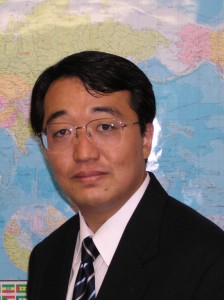緊張と統合:内村鑑三におけるキリスト教と日本の精神
このシリーズでは、私が1994年に執筆した統一神学大学院(Unification Theological Seminary)の神学課程修士論文(Divinity Thesis)を日英二か国語で掲載している。
5.無教会運動の構造の続き
H・リチャード・ニーバーが彼の著書 Social Sources of Denominationalism (邦訳名『アメリカ型のキリスト教の社会的起源』)において論ずるところによれば、諸々の宗教的グループは宗教的に軽視された貧者のセクトに起因しており、彼らは自分達が特に必要としている願望に符合するような、新しいタイプのキリスト教を作り上げた。彼はこれを「権利を奪われた人々の宗教」(religion of the disinherited)と呼んでいる。その主な特徴は感情的であり、至福千年王国を志向し、終末論的であり、万人司祭主義を主唱し、直接的な経験による救いを保証し、平信徒の運動であり、職業的司祭階級に敵意を抱いており、倫理的・社会的な再構築を目指している点にある。
しかしこのような新しい宗教運動の特徴は、遅かれ早かれ変化をきたさざるを得ない。新しい信仰は文化的な人々、支配者、教養ある人々の宗教となり、抽象的な神学のくだらない批判のまっただ中でその自発的なエネルギーを失って行く。それは政府と貴族達の政策と妥協して、その倫理的な公正さを犠牲にしてしまう。そしてその終末論的な希望を、立派になった教会の安寧にとっては不適切なものとして、放棄してしまうのである。
キリスト教が幸福で文化的な人々の宗教となり、その過程において哲学的で、抽象的で、形式的で、倫理的に無害なものに成長して行った時、社会の下層階級の人々は、彼らの心理学的な必要性に合致せず、魅力的な倫理的理想を述べもしない信仰によって、自分達が宗教的に疎外されているのを発見するのである。そして、そこから次なる宗教的革命の波が起こり始めるのである。
しかしながら、無教会はこの発達のモデルには当てはまらない。この運動は日本社会の下層階級から始まったものでもなく、また、より複雑な組織へと発展したものでもなかった。無教会の例は、一つの運動がカリスマ的リーダーの継承によって永続され、日常化や組織化の過程が起こる必要のない場合もあるという可能性を証明している。無教会運動の非形式的な団結力は、彼らの信仰の思想的内容に由来している。制度的教会における「法的一体性」は、キリストおよび信徒との間の「霊的一体性」に置き換えられているのである。このタイプの一体性は、神に対する個人的な献身以上の何ものをも要求せず、それは非人格的な組織の一律性よりも、個人の独自性と自由を重要視しているのである。
V. Structure of Mukyokai Movement (Cont.)
In his Social Sources of Denominationalism, H. Richard Niebuhr argues that religious groups originate as sects of the religiously neglected poor, who fashion a new type of Christianity which corresponds to their distinctive needs. He calls this “the religion of the disinherited.” Its main characteristics are emotionalism, propensity toward millenarianism, apocalypticism, the priesthood of all believers, the assurance of salvation through immediate experience, the lay character, antagonism to a professional class and the search for an ethical and social reconstruction.
However, these characteristics of the new religious movement have to undergo a transformation sooner or later. The new faith becomes the religion of the cultured, of the rulers, of the sophisticated; it loses its spontaneous energy amid the quibbling of abstract theologies; it sacrifices its ethical religiousness in compromise with the policies of governments and nobilities; it abandons its apocalyptic hopes as irrelevant to the well-being of a successful church.
Whenever Christianity has become the religion of the fortunate and cultured and has grown philosophical, abstract, formal, and ethically harmless in the process, the lower strata of society find themselves religiously alienated by a faith which neither meet their psychological needs nor sets forth an appealing ethical ideal. Now begins the successive waves of religious revolution.(13)
The Mukyokai, however, does not fit this development model, as the movement did not originate in the Japanese lower classes, and it has not developed into a more complex organization. The Mukyokai example proves the possibility that a movement can be perpetuated through a succession of charismatic leaders, and the process of routinization and bureaucratization need not take place.(14) The Mukyokai movement’s informal cohesiveness is derived from the ideological content of their faith. The “legal unity” of the institutional churches has been replaced by a “spiritual unity” with Christ and each other. This type of unity does not demand anything more than a personal commitment to God, and it places the uniqueness and freedom of the individual above the mechanical uniformity of an impersonal organization.(15)
(13)H. Richard Niebuhr, Social Sources of Denominationalism. (Cleveland and New York: The World Publishing Company, 1957), pp.26-76.
(14)op cit, Caldarola, p.146.
(15)Ibid,. p.141.
